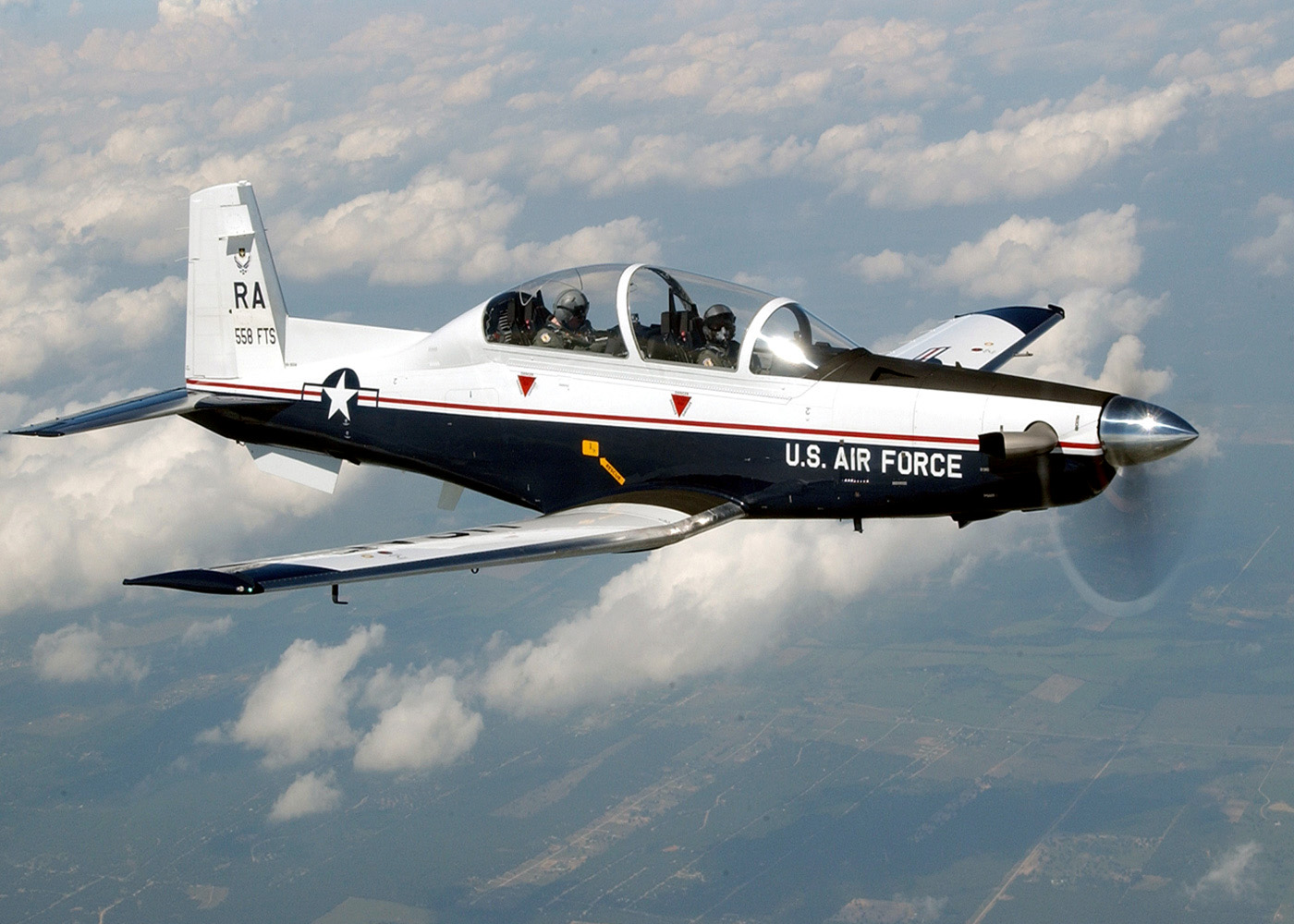The T-6A Texan II is a single-engine, two-seat primary trainer designed to train Joint Primary Pilot Training students in basic flying skills. USAF photo by MSgt. David Richards.
The Air Force is still trying to figure out exactly what caused a “cluster” of hypoxia-like incidents that forced the service to ground its T-6 trainer fleet for about a month in February.
Maj. Gen. Glenn Davis, Air Force Materiel Command’s mobilization assistant to the commander, has been tapped to lead a team working to determine the root cause. As part of that team, the 412th Test Wing at Edwards AFB, Calif., will begin testing this month through mid-May to “characterize the T-6 aircrew breathing system through all phases of flight,” according to an April 3 AFMC press release. Two T-6 aircraft will be used for testing, one of them with a history of physiological events.
“We’re working aggressively to analyze a number of potential causation tracks, but our analysis is in the very early stages, so we’re not ready to identify specific causal factors to the recent UPEs [unexplained physiological events],” said Davis. “AFMC and [Air Education and Training Command] officials are working together to ensure that pilots are safe as we continue to fulfill the vital pilot production mission.”
The Air Force lifted the grounding on Feb. 27, saying its initial investigation found several components associated with delivering oxygen “failing at unexpected rates, likely resulting in [a] degraded” On-Board Oxygen Generating System [OBOGS]. As part of “proactive life cycle management,” the service is now in the process of replacing the existing OBOGS concentrator. Fielding of the new systems will start this year and will be complete in Fiscal 2021.
“In addition to preserving system reliability, this concentrator will improve maintainability and record system performance data that can be useful in determining root cause of potential physiological events,” states the release.
The Air Force Life Cycle Management Center’s Agile Combat Support Directorate also recently awarded a $195,000 contract to SPOTLIGHT Labs to test a device designed to alert crewmembers if oxygen levels in the bloodstream are running low. The device, known as SPYDR, will be integrated into the pilot’s helmet, according to a different release.
“At certain thresholds, different alarms will sound,” said 2nd Lt. Jessica Farris, an engineer in the ACS Directorate’s Human Systems Office and program manager of the Pulse/Hypoxia Observation Gear team that is managing the project. “In the beginning, it’s a constant beep and then the beeps get faster as the pilot loses oxygen.”
The goal is to provide the pilot more time to take actions that could prevent physiological symptoms in flight, according to the release.
The company is providing 20 SPYDR devices and technical support during testing, which will take place initially at JBSA-Randolph, Texas, and then at Edwards, “in parallel to an overarching evaluation of the aircrew breathing system,” states the release.
